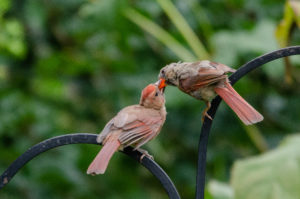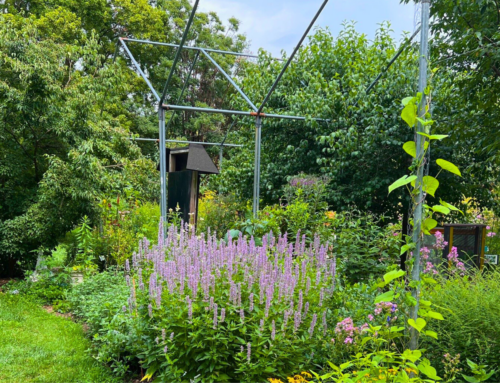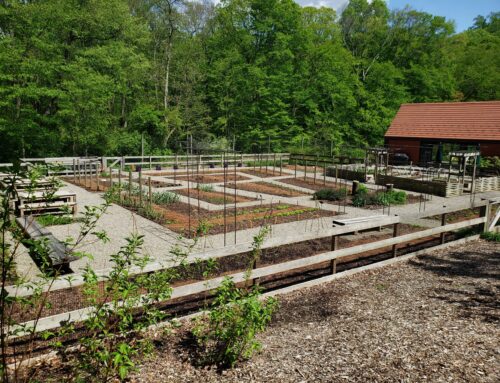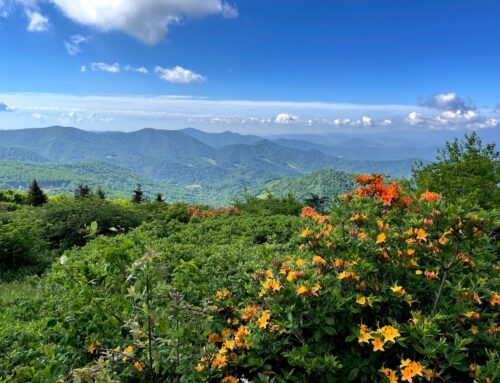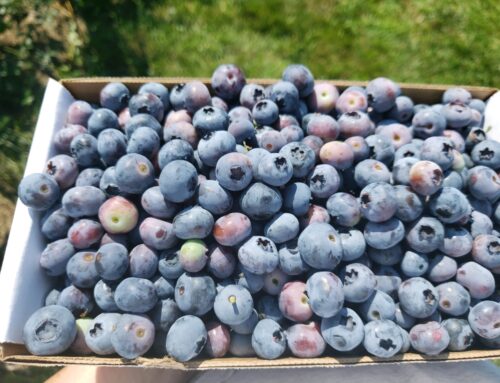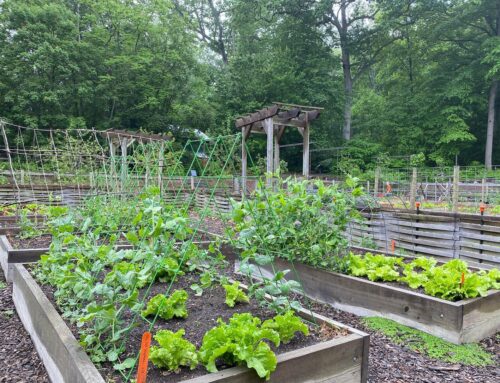The interdependence of plants, birds and insects is a classic example of mutualism in nature. Each depends on a healthy population of the other to thrive, and it’s not hyperbole to say a disturbance in this balance could have profound adverse effects on the quality of life on earth. Observing and counting birds can be a good indicator of the health of this cycle.
Most of our songbirds, whether migrants or not, depend to some degree on insects for nutrition. Breeding adds to a bird’s energy requirements, and migration increases those caloric needs even further. In his book, The Nature of Oaks, Doug Tallamy, a professor of entomology and wildlife ecology at the University of Delaware, stresses how an abundant insect population is necessary for birds to succeed in both migration and breeding. Migrating birds can fly unbelievable distances between stops. When they do stop, they must refuel and insects provide the most efficient source of calories for refueling. Given an adequate food supply, a bird will regain 30-50% of its body weight during a one-day migration stopover.
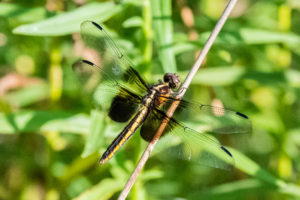
Bird migration is hazardous. Mortality rates are high. So why migrate? What is the advantage of making this dangerous journey? A major advantage is that the nearly inexhaustible supply of insects that appears in the temperate zone spring fosters breeding success. Tallamy quotes a study showing that birds that stay in the tropics raise 2-3 young per brood, whereas those that migrate northward raise on average 4-6 birds per brood.
In his new book on migration, A World on the Wing, Scott Weidensaul describes migrating birds as following the “green wave” of leaf-out and the resultant flush of insects that follows. Caterpillars are a favorite meal. They are large, soft, calorie-rich and easy for baby birds to digest. A pair of breeding birds may require more than 6,000 caterpillars to raise a brood of four chicks.
Many birds change food preferences to a higher percentage of insects while breeding. You may have noticed that hummingbirds seem to almost disappear from your feeder in mid-summer, only to reappear later. This is because they are busy gleaning insects from leaves or plucking them from mid-air. Watching this can be great backyard entertainment.
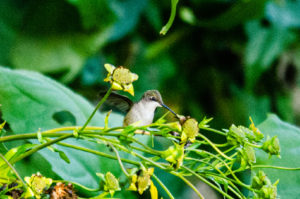
But there are signs of trouble ahead.
In 2019, the Cornell Laboratory of Ornithology, along with other organizations, published a study in Science showing that the overall population of birds in North America had dropped by 3 billion over the past 50 years, some 30% of the total population. [Major contributions to the data for this study came from Cornell’s eBird and Audubon’s Christmas Bird Count. Many birders at Tyler Arboretum participate in these programs.]
It’s probably not coincidental that studies also document what appears to be a profound loss of total insect mass worldwide. Postulated causes of both bird and insect decline are similar: habitat destruction, the use of insecticides, urbanization, industrialization, introduced species, climate change and more.
Professor Tallamy has done studies linking a decline in insect biomass to a decline in the number of birds. Tallamy and his co-author, Greg Shriver, used data from yet another long term citizen science project, the Breeding Bird Survey, to show that 90% of the birds lost in the last 50 years were members of species that require insects to feed themselves and their young, whereas the number of non-insect dependent birds increased.
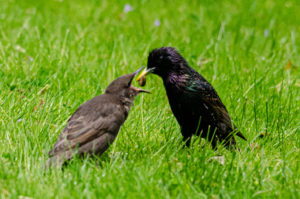
Non-native starling (Sturnus vulgaris) feeding young
Tallamy and his students have also published a study showing the effects of non-native plants on insect biomass. They found 96% lower caterpillar biomass in plots of non-native plants compared to plots of native plants.
One of Tallamy’s former students did a study that linked non-native plants to a reduced population of birds. She found reductions in both caterpillar mass and the number of chickadees in suburban yards that held a high proportion of non-native plants compared to yards with primarily native plants. A yard consisting of at least 70% native plants appears to be needed to support bird populations indefinitely.
Weidensaul offers at least one example of how climate change might affect the critical balance between insect and bird populations. With the rising average temperature, leaf-out happens earlier in the northern temperate zones. Migrating birds whose trigger for migration seems to depend heavily on the day/night light cycle can have trouble keeping up with the more rapid advancement of the “green wave”. A study from Europe found that for every 1°C rise in average spring temperature, birds arrive one day earlier on their breeding ground, but leaf-out is advancing three times faster. This significantly reduces caterpillar abundance available to the newly arrived birds. Weidensaul points out this has yet to be observed in North America, likely due to a larger diversity of insect life and tree species in North American forests relative to European forests. But it could be a harbinger of things to come.
So what can we do as individuals? Little things can make a difference:
- Plant insect and pollinator-friendly native plants and trees. Seventy percent native seems to be the magic number for sustainability.
- Avoid insecticides.
- Participate in citizen science projects. If you are a birder, use eBird for your lists. If you simply enjoy watching the birds at your feeders, look into Cornell’s Project Feederwatch. Participate in a Christmas Bird Count. If you prefer not to go out in the cold, you can participate by just watching your feeders on count day.
- Believe in and do whatever you can to combat climate change.
